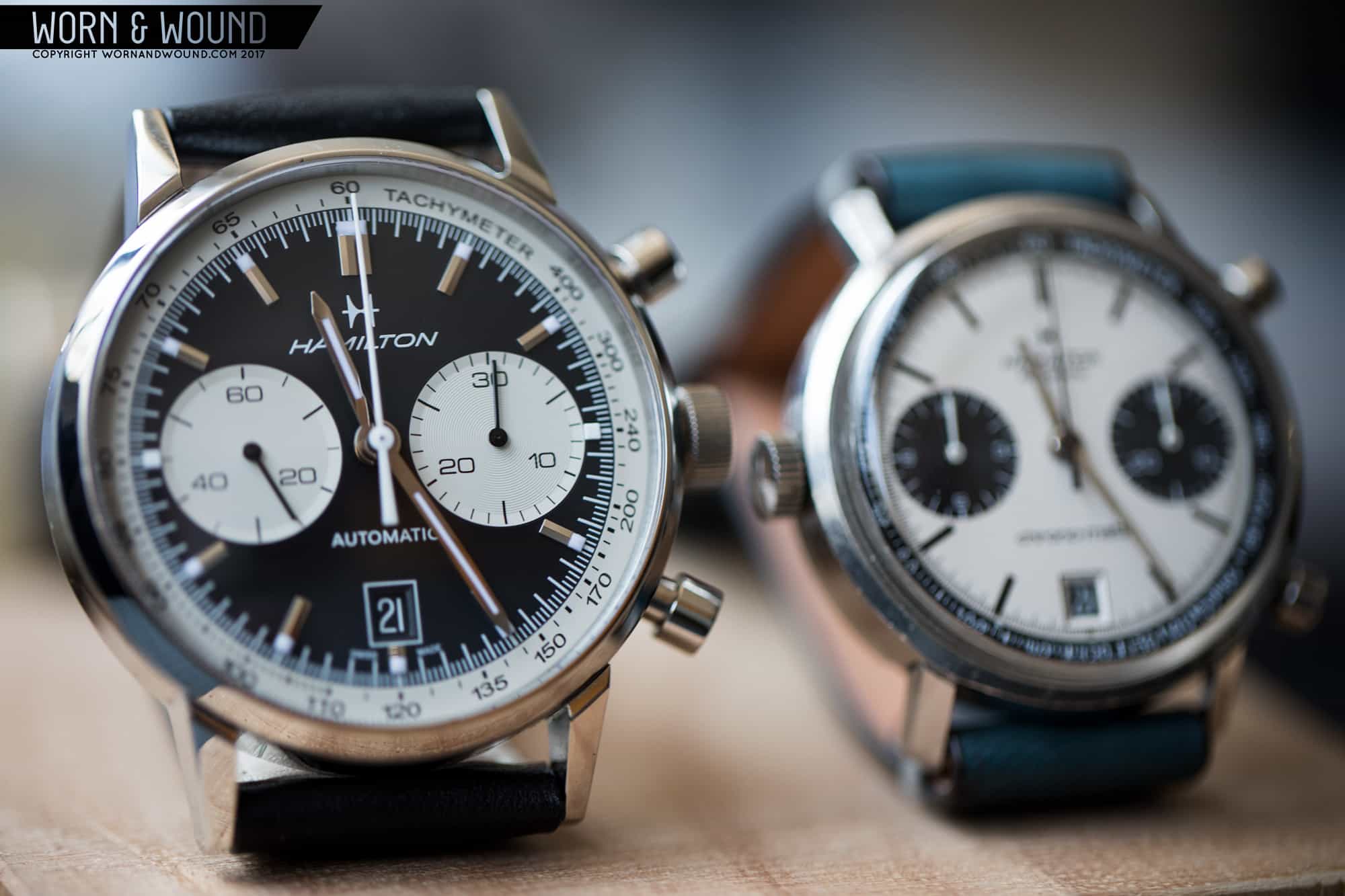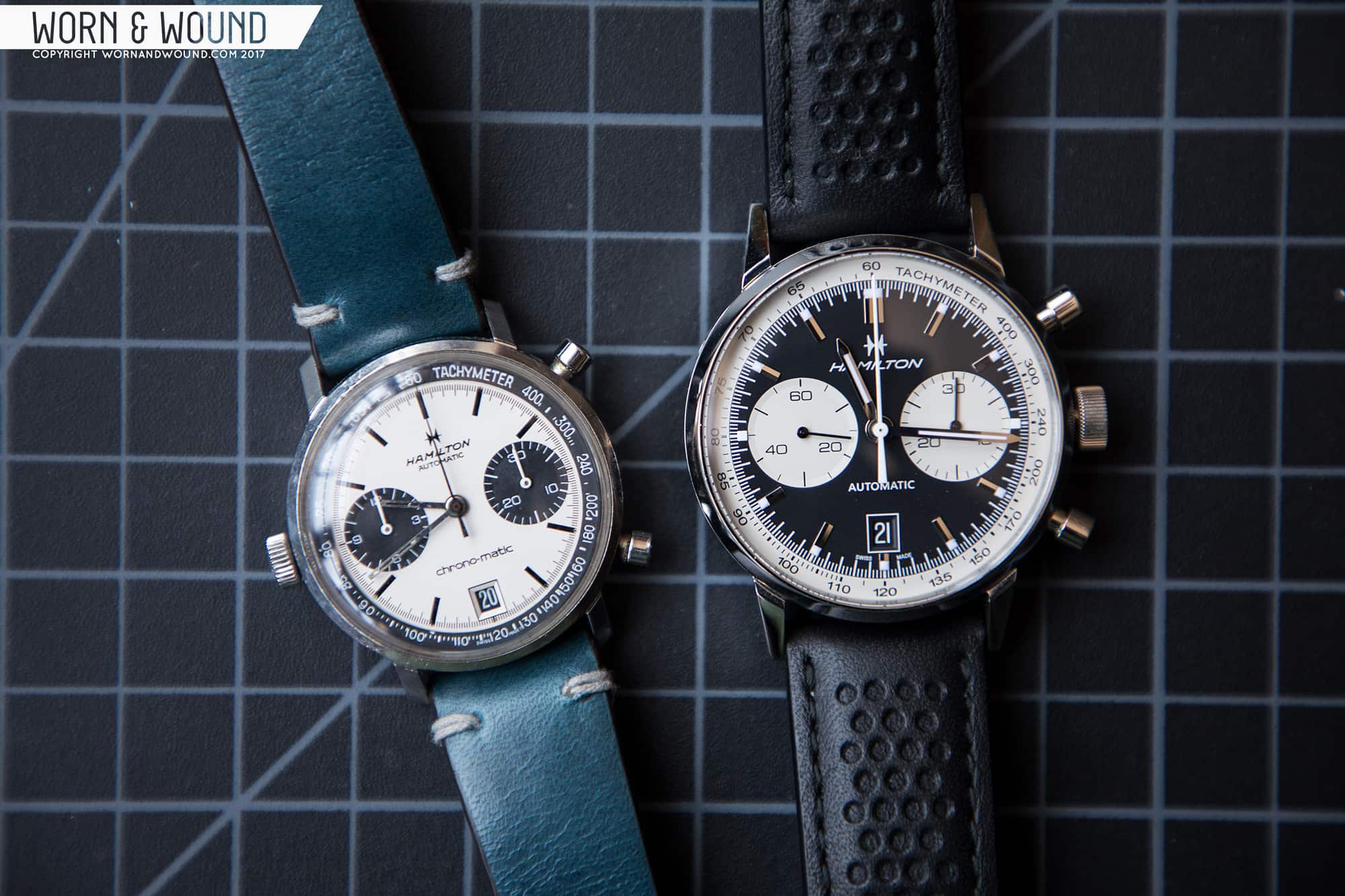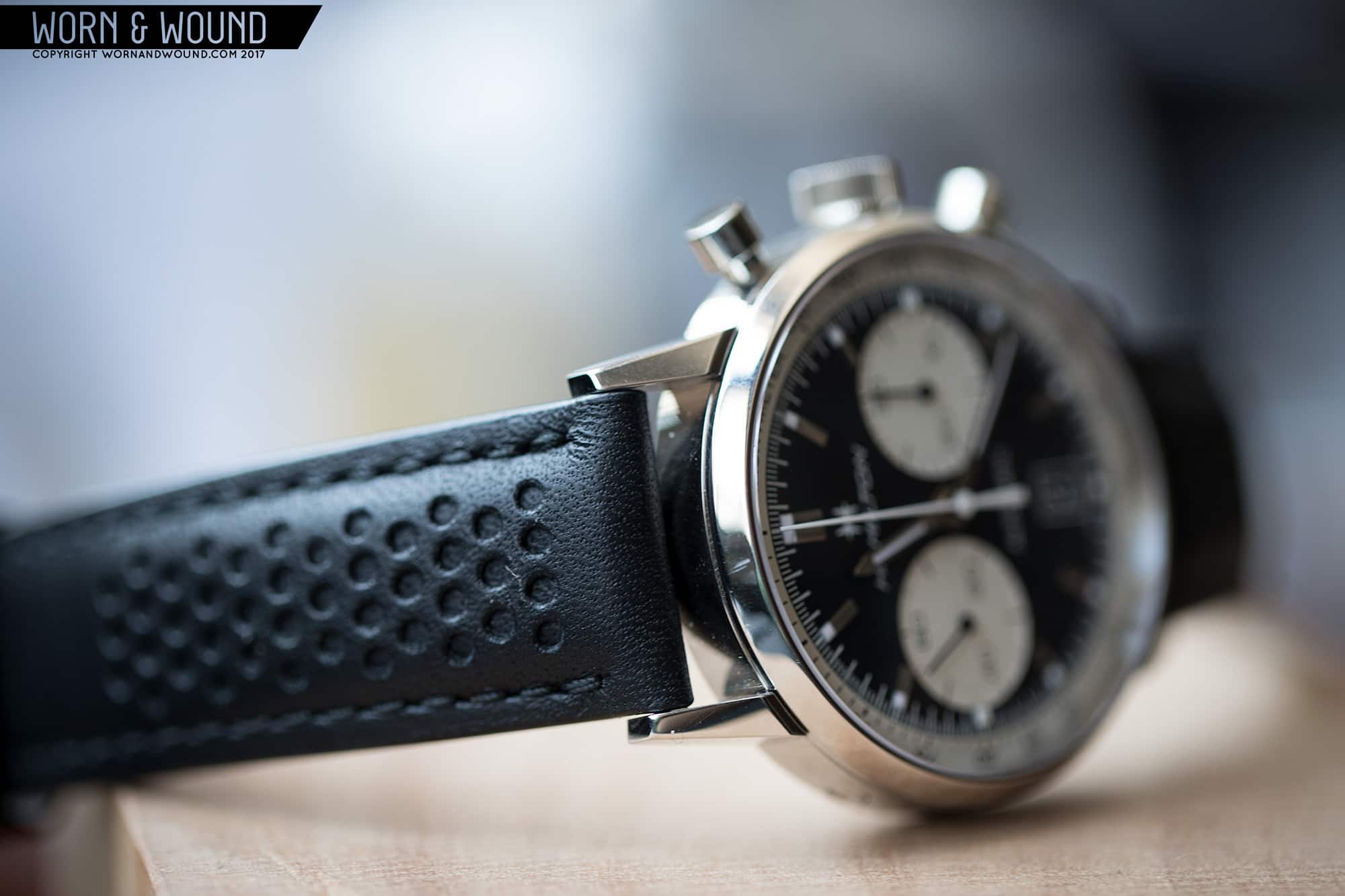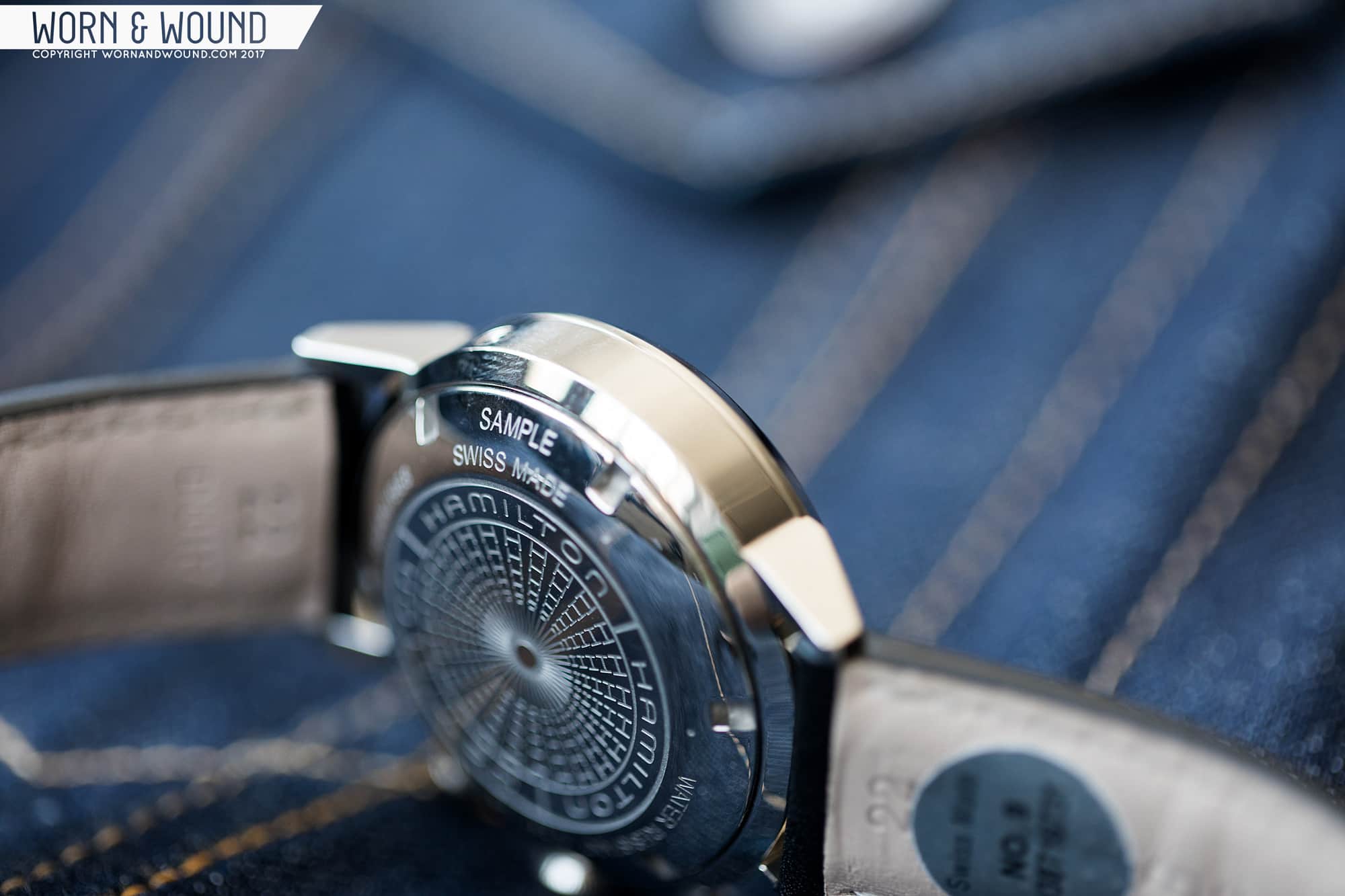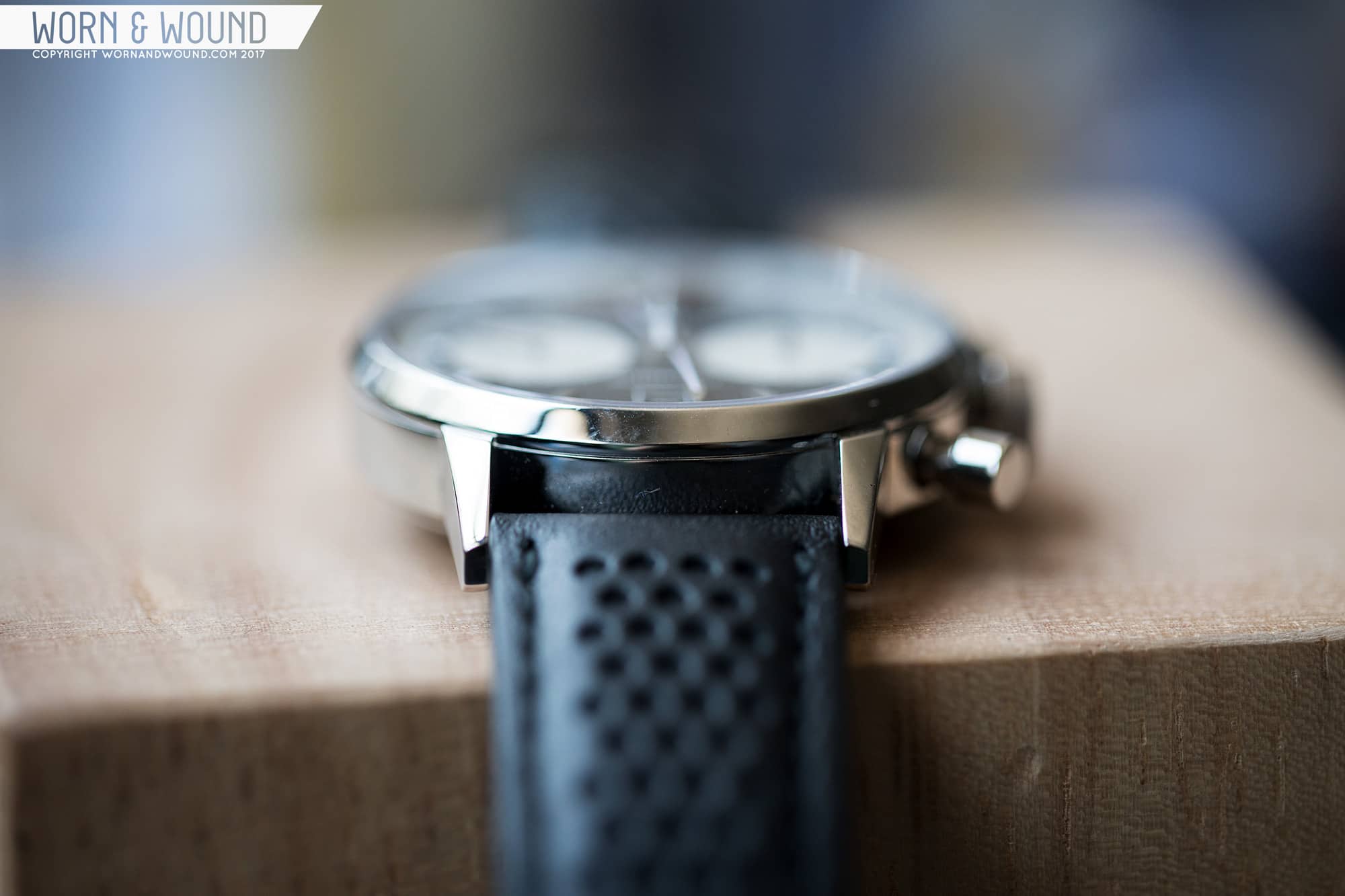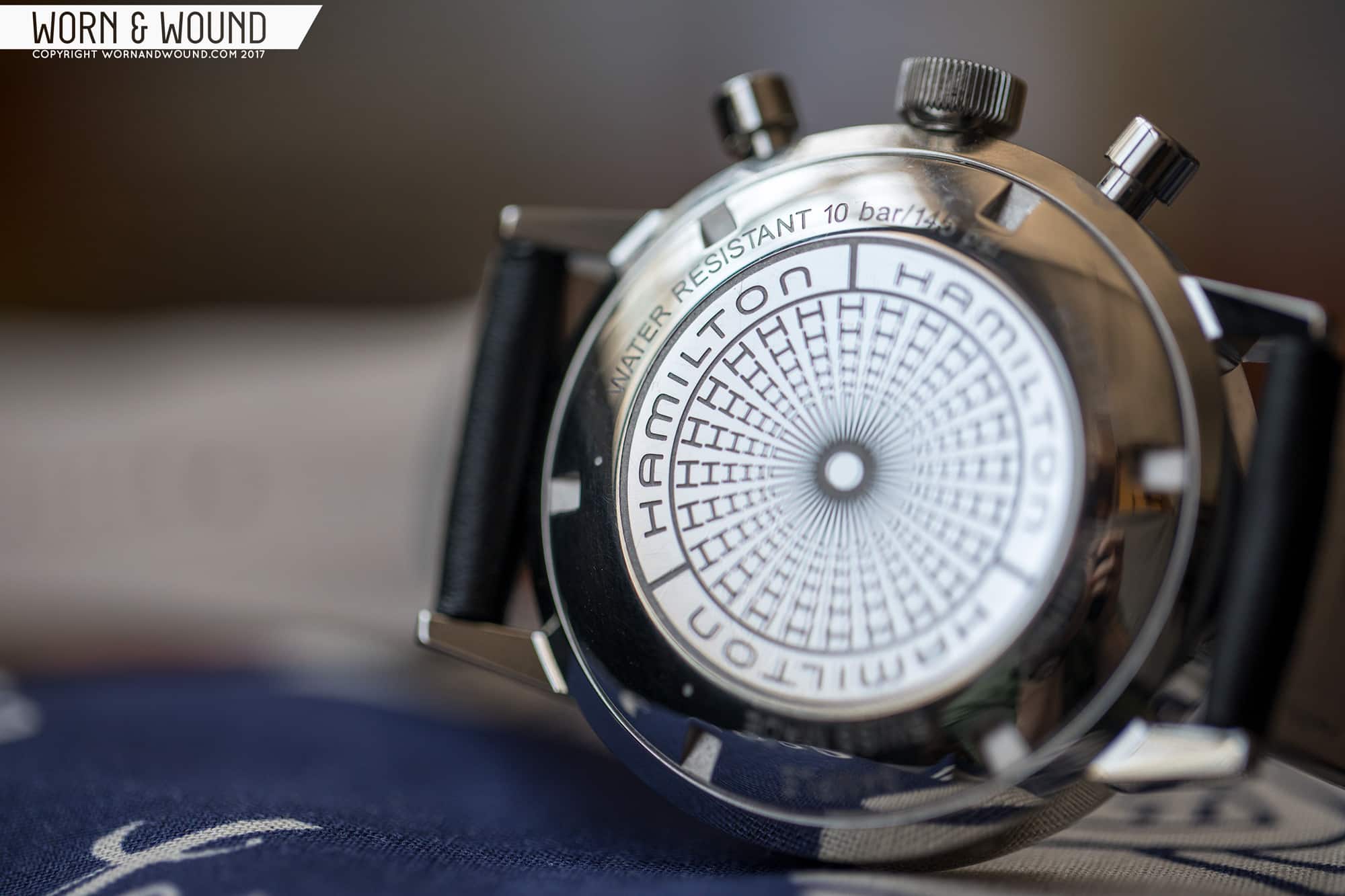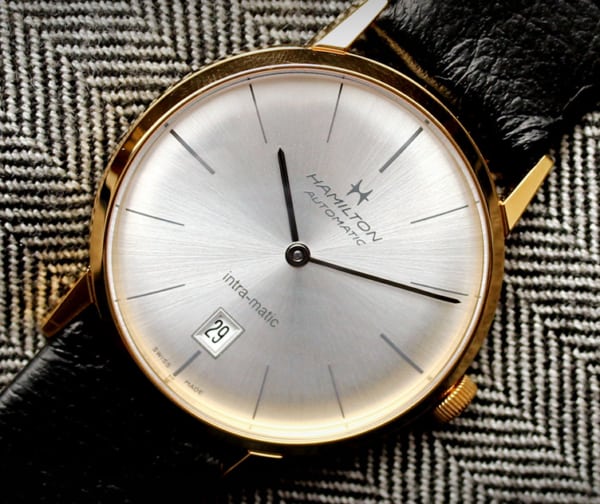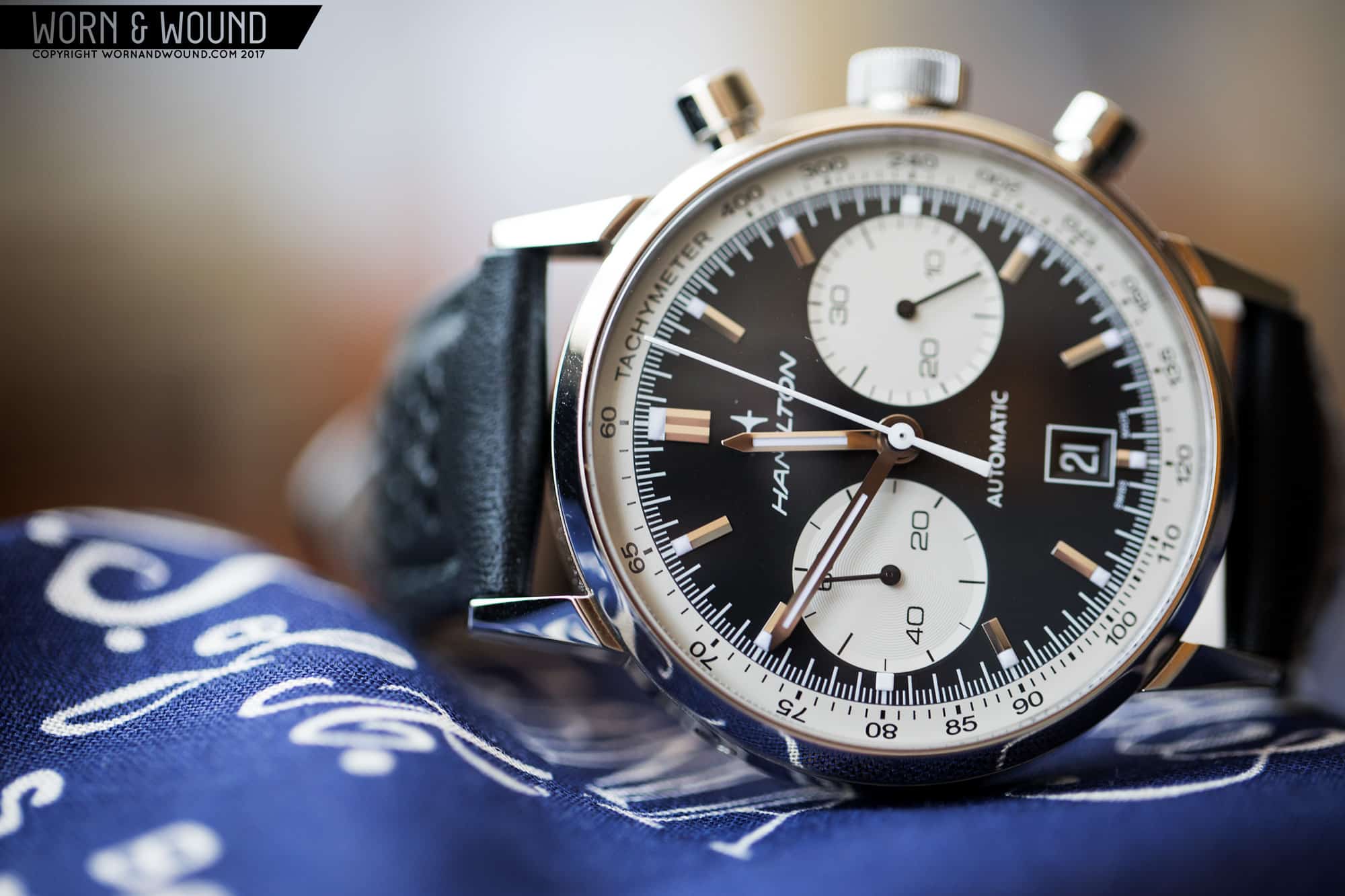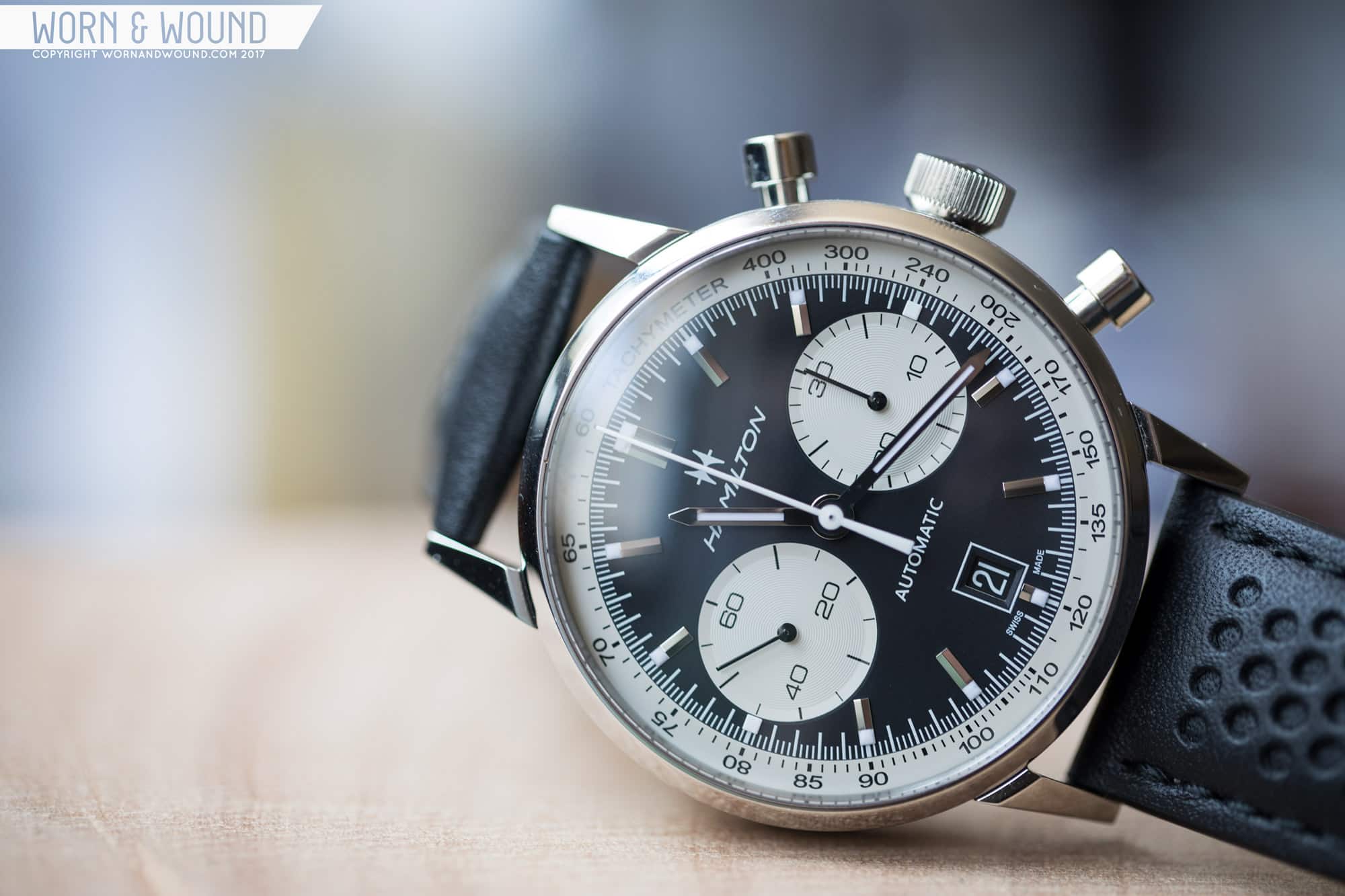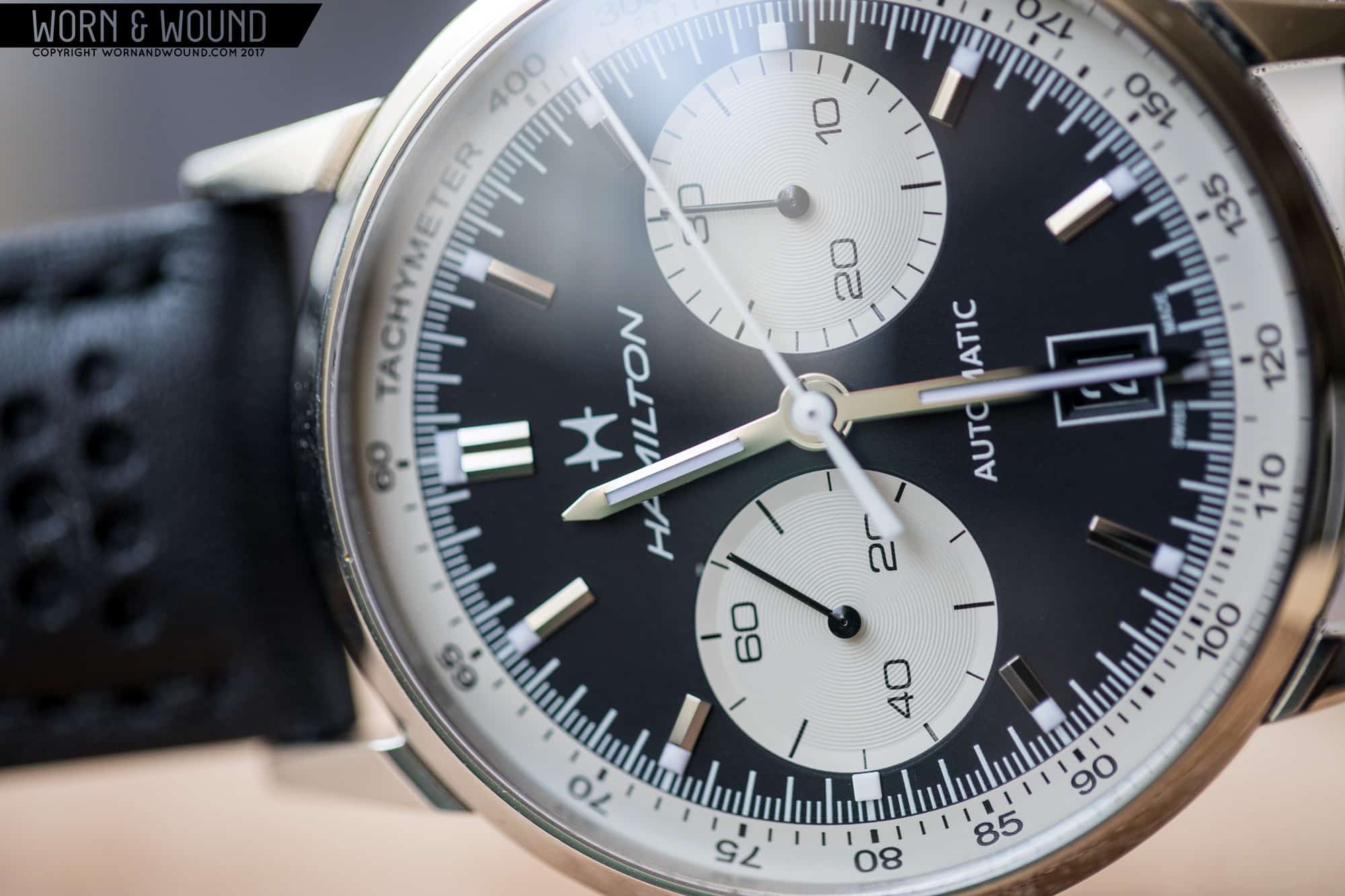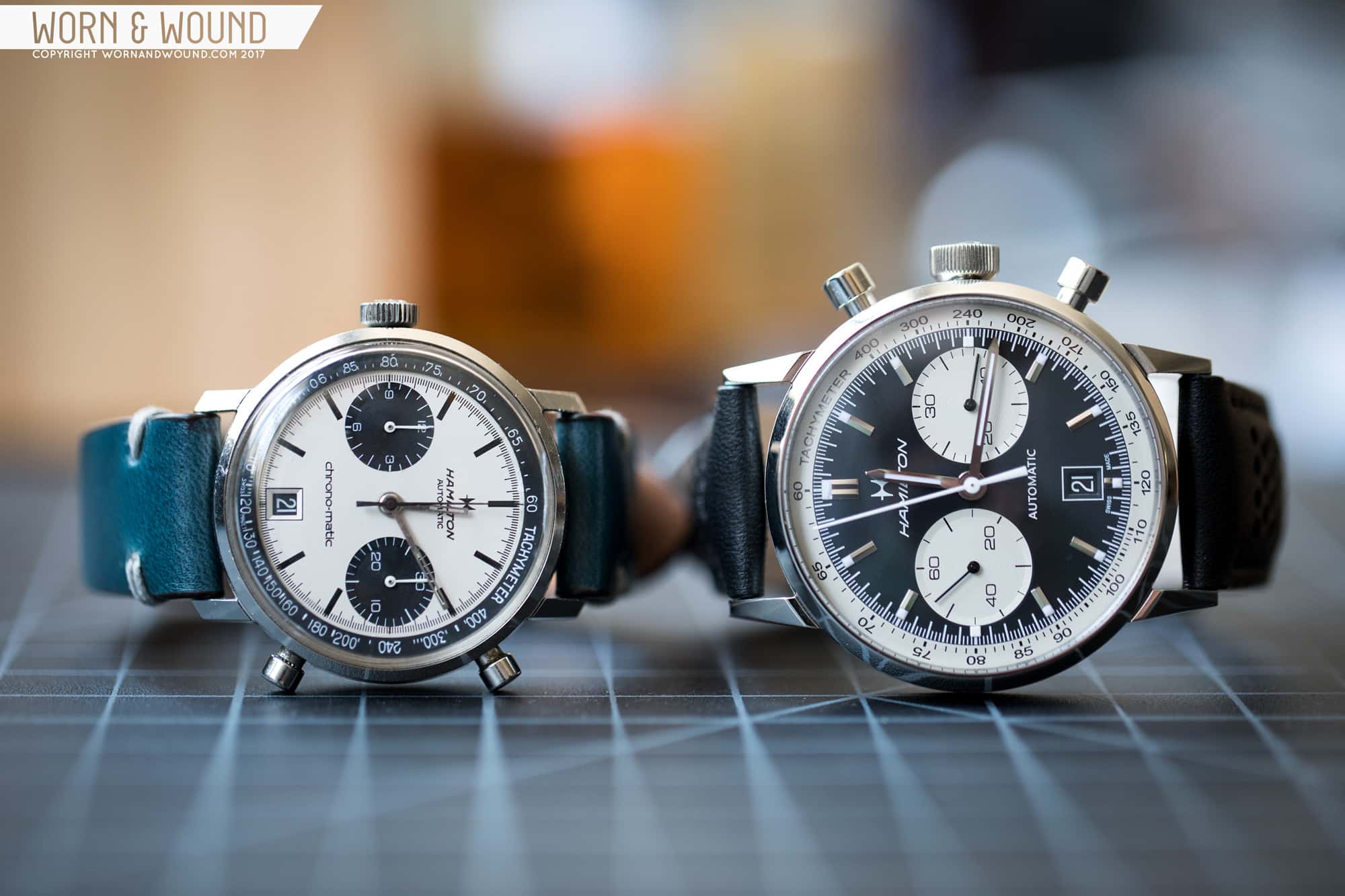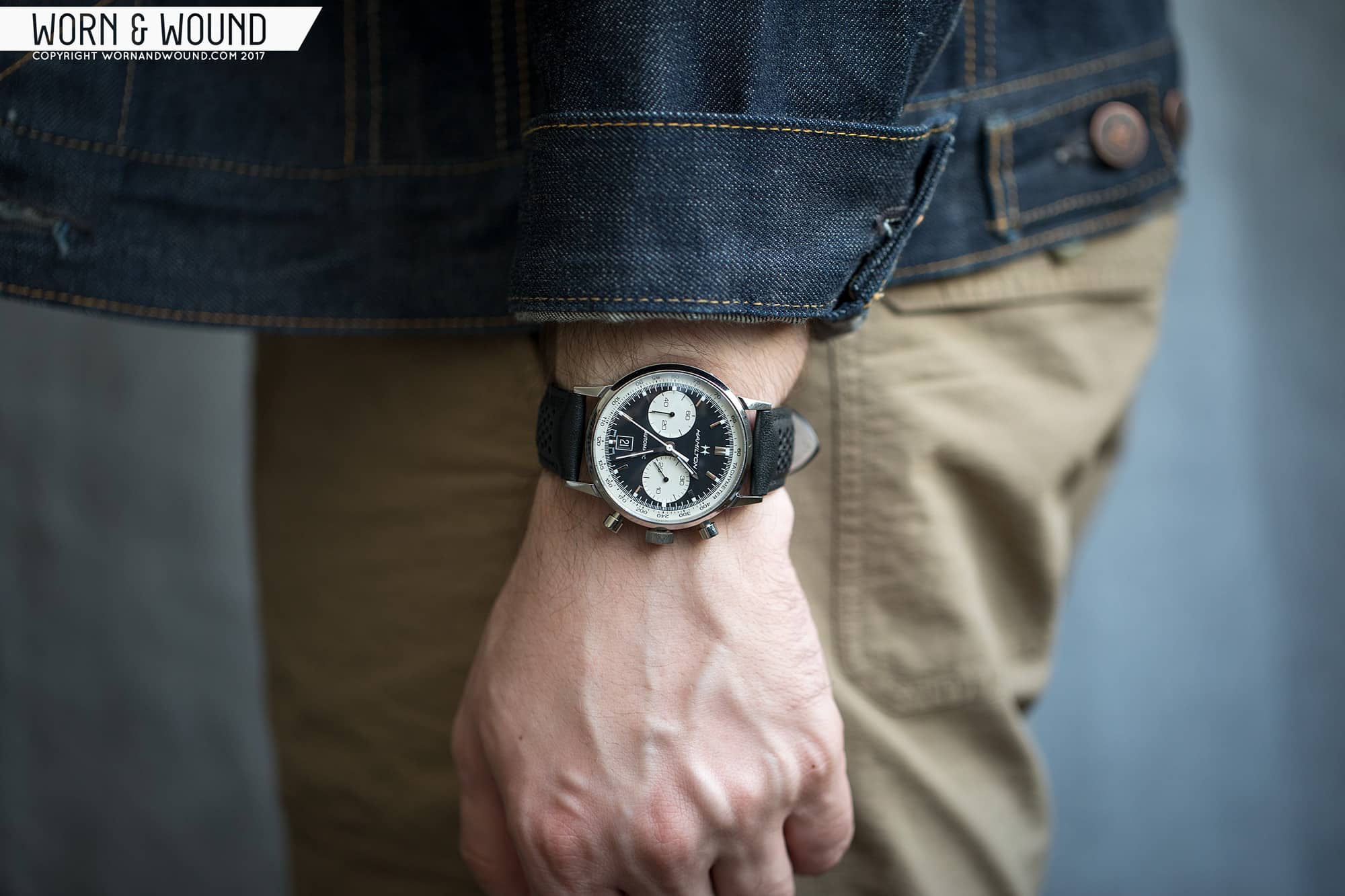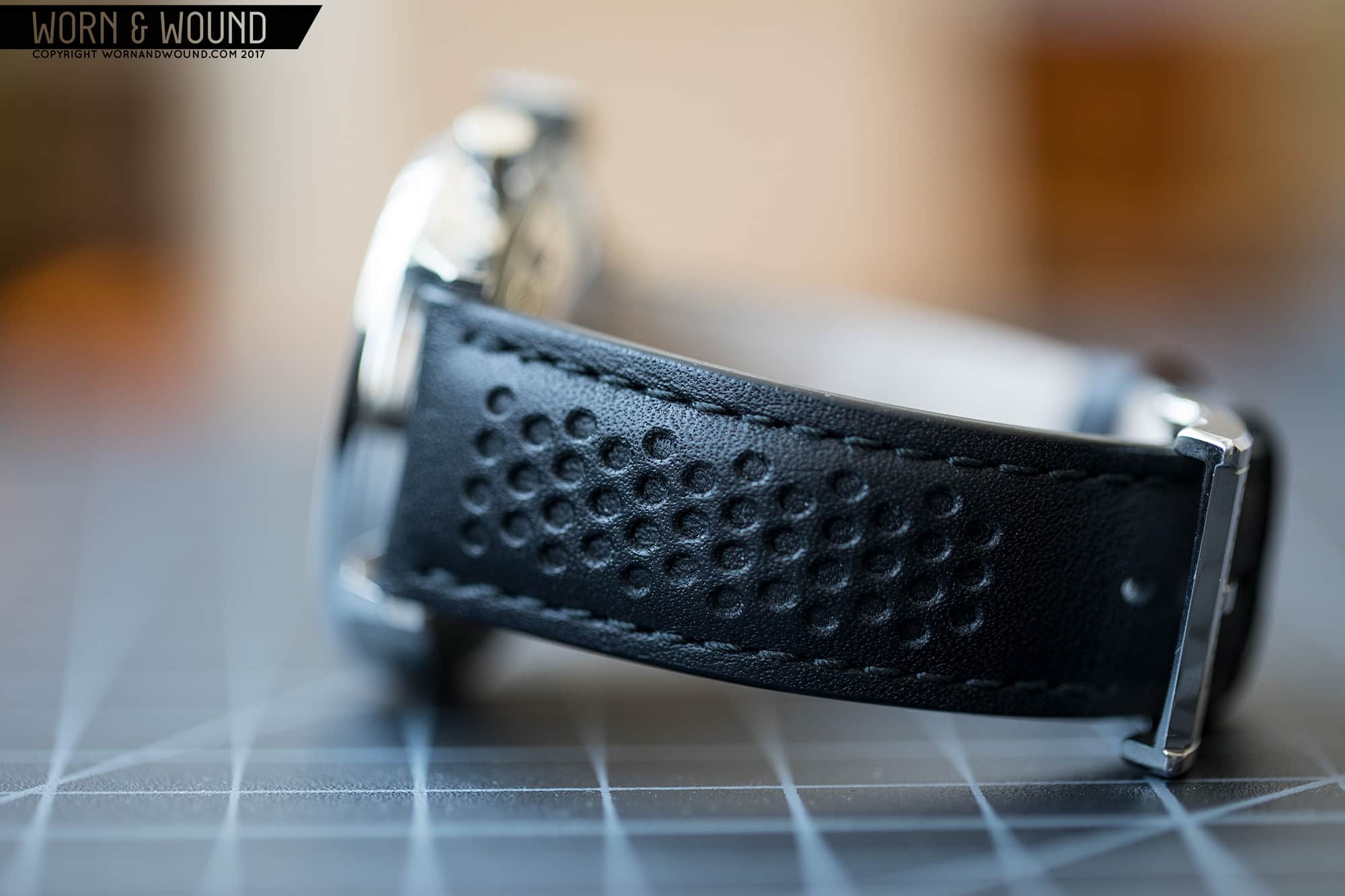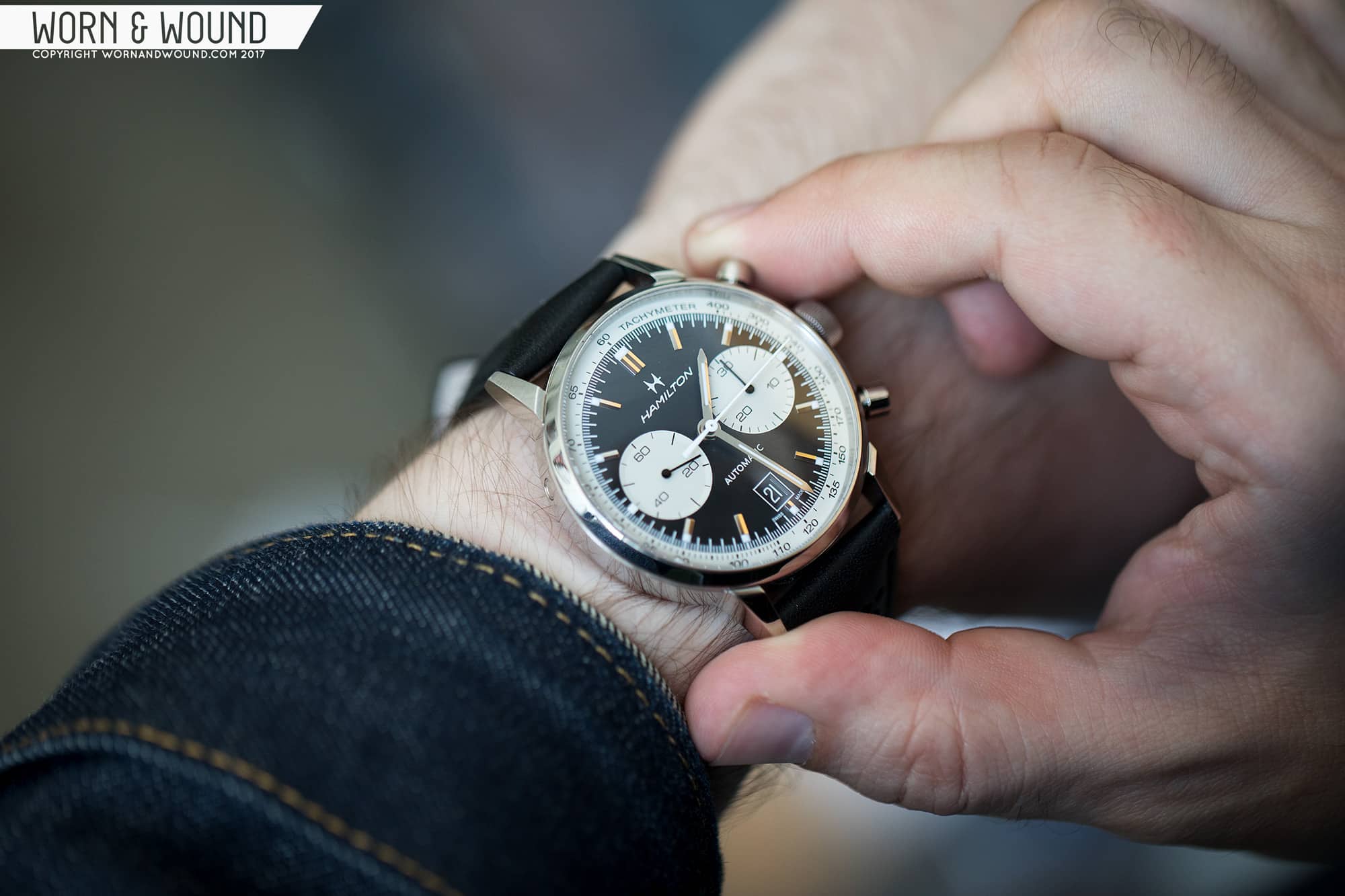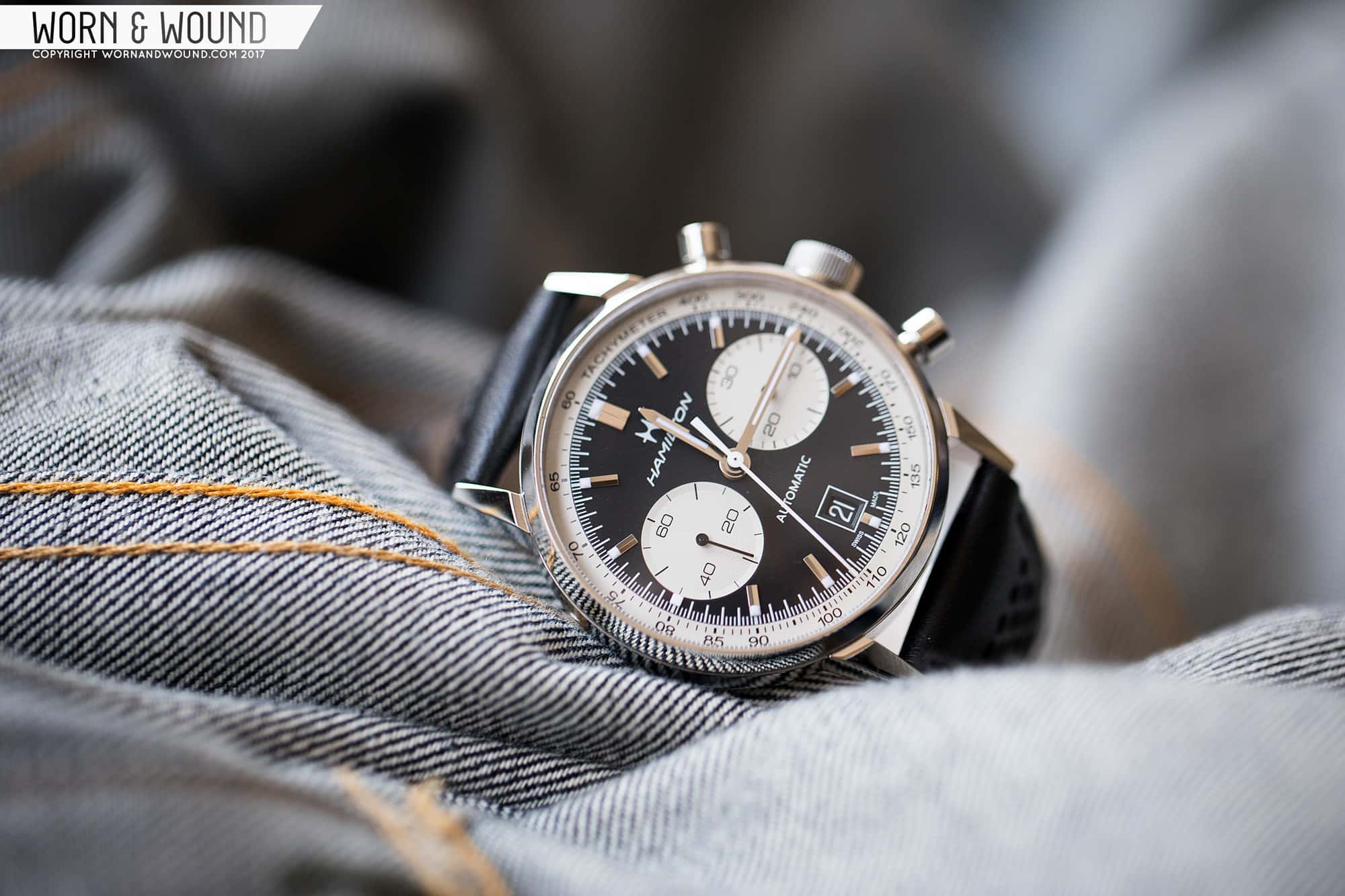Some watches cause quite the stir in watchworld and the Hamilton Intra-matic 68 Auto Chrono is certainly one of them. First announced in January of last year at Hamilton’s Basel World Preview, the Intra-matic 68 has been the center of a lot of attention since being unveiled. In many ways, it’s the watch people, yours truly included, have been waiting for from the brand. Inspired by vintage racing chronographs, the Intra-matic 68 plays off of some iconic designs from their archives that have gained a lot of notoriety in the last few years. But, like many other vintage-watches revisited, it’s not without some controversy that has added to the buzz.
The Intra-matic 68 isn’t a recreation of a specific watch, rather it pulls from several that were made in the ’60s and ’70s. The unfortunately colloquially titled “poor man’s Carreras” had dual-register layouts with tachymeters, usually in panda or inverse panda coloring. They largely featured manual wound Valjoux movements (such as these beauties), save the Chrono-matic from 1969 which sports the Caliber 11. The Intra-matic 68 keeps the essence and many of the details of these dual register watches, but puts them in a larger and more modern case.
And there’s the rub. Coming in at 42mm, the Intra-matic 68 has set off alarms in the eyes of many enthusiasts, jumping up from the original 36mm, and perhaps past the Goldilocks zone of around 40mm. It’s hardly the only 42mm chronograph out there–Speedmasters and Autavias are there too–so the question is really if the design still works at that scale. Of course, nearly 50 years later, the size isn’t the only thing to change. Inside, you’ll find the modern H-31 automatic chonograph movement, and it features a domed sapphire instead of acrylic. Coming in at $2,195, the Intra-matic 68 still has a substantial price tag, though it comes in under its rapidly ascending vintage brethren.









 Featured Videos
Featured Videos




